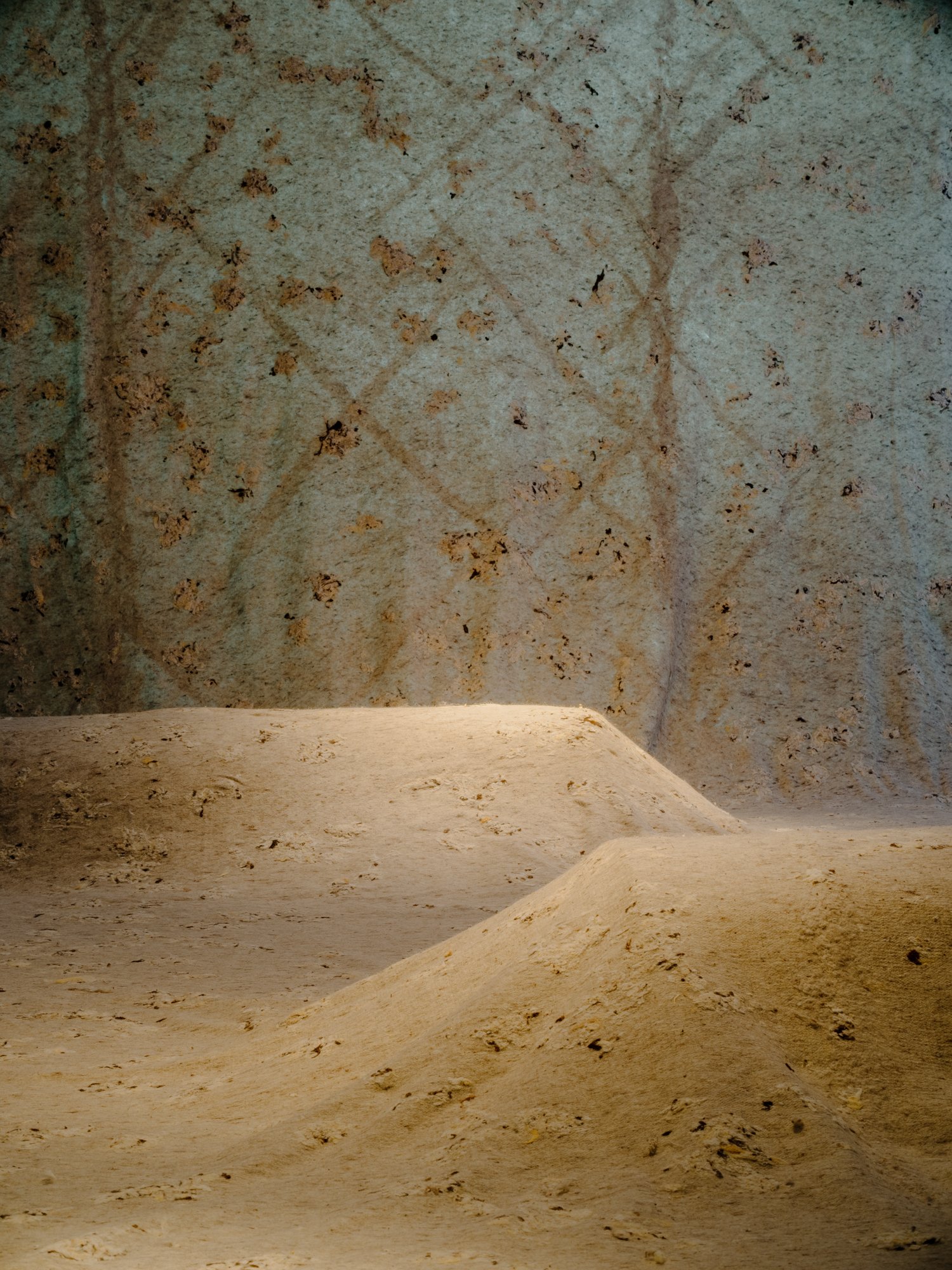
MIL LECHES
2024
Felt canvas made from the wool of all sheep breeds in the Spanish State.
Variable dimensions
Spain
La obra Mil leches de Asunción Molinos Gordo es una pieza versátil que puede adoptar múltiples formatos gracias a la naturaleza del tejido, permitiendo su materialización de diversas maneras. Hasta la fecha, ha sido expuesta como una instalación de gran escala que configura un espacio dinámico, a través de vídeos o enmarcada como obra textil.
"Mil leches" originates from the research developed by Asunción Molinos Gordo during the Buen Vivir residency at Mutur Beltz, in the Carranza Valley, País Vasco. During her stay, she investigated the concept of race as applied to sheep. Just like human races, sheep breeds do not scientifically exist. They have been created as a device for the economic exploitation of all living beings, within what some authors refer to as racial capitalism.
Blood purity is an anomaly; in the case of sheep and other mammals, the lack of genetic mixing between varieties with different physical traits results in genetic poverty, making animals weaker and more vulnerable. Blood purity is inversely proportional to an animal’s ability to survive. In contrast, genetic mixing fosters diversity, producing more resilient animals with a greater capacity to adapt to the ever-changing conditions of their environment.
The title of the piece, Mil leches (A Thousand Milks), alludes to an insult commonly used in Spain to refer to those with diverse and therefore “impure” origins. The choice of sheep’s wool as a material invites reflection on human coexistence in a present where the defense of pure identities has once again taken center stage in the most radical political discourses. The sheep carries a strong symbolic charge: it is a sacred animal in all three monotheistic religions and has held a sacrificial role across different peoples and cultures.
The exploitation of wool spans as far back as human greed itself. It played a key role in colonial expansion, particularly for the Spanish and British Empires. In the 17th century, fine Spanish wool was the only national product traded on the Amsterdam Stock Exchange—the world’s first modern stock market. This highly valued wool, known as “Spanish white gold,” came exclusively from Merino sheep, a breed created by crossbreeding North African sheep, brought by the Marinids, with native Iberian sheep. The name Merino itself derives from Banu Marin, a nomadic tribe from the eastern Maghreb.
For centuries, wool has served many essential purposes—it fertilized fields, reinforced roads, insulated homes, and clothed generations. Yet today, the European Union classifies it as a category 3 hazardous agricultural waste. How did this transformation happen? Why does wool now account for only 1% of the textiles we wear? And why has it become a discarded material, often incinerated in landfills?
The production of Mil leches faced significant challenges. The first hurdle was obtaining and transporting wool from all 52 sheep breeds listed in the Spanish Ministry of Agriculture’s Official Breed Catalog—42 of them native and 7 from other regions.
In the spring-summer shearing season of 2022, we successfully collected one ton of wool from all these breeds. However, convincing shepherds to accept payment for their fleeces proved difficult. Wool has lost its value in Spain—shepherds are used to giving it away or even burning it, as non-Merino wool has no market demand. Each fleece was purchased for 2 euros—more than twice its usual price.
Finding a wool-washing facility was another major obstacle. Spain once had hundreds, but now only three remain open. The wool was eventually washed at Mantexman in Mota del Cuervo, Cuenca. The final challenge was locating a family-run textile manufacturer willing to produce the fabric. This led us to Albert i Sempere in Banyeres de Mariola, Alicante, a family business with a long tradition in textile recycling.




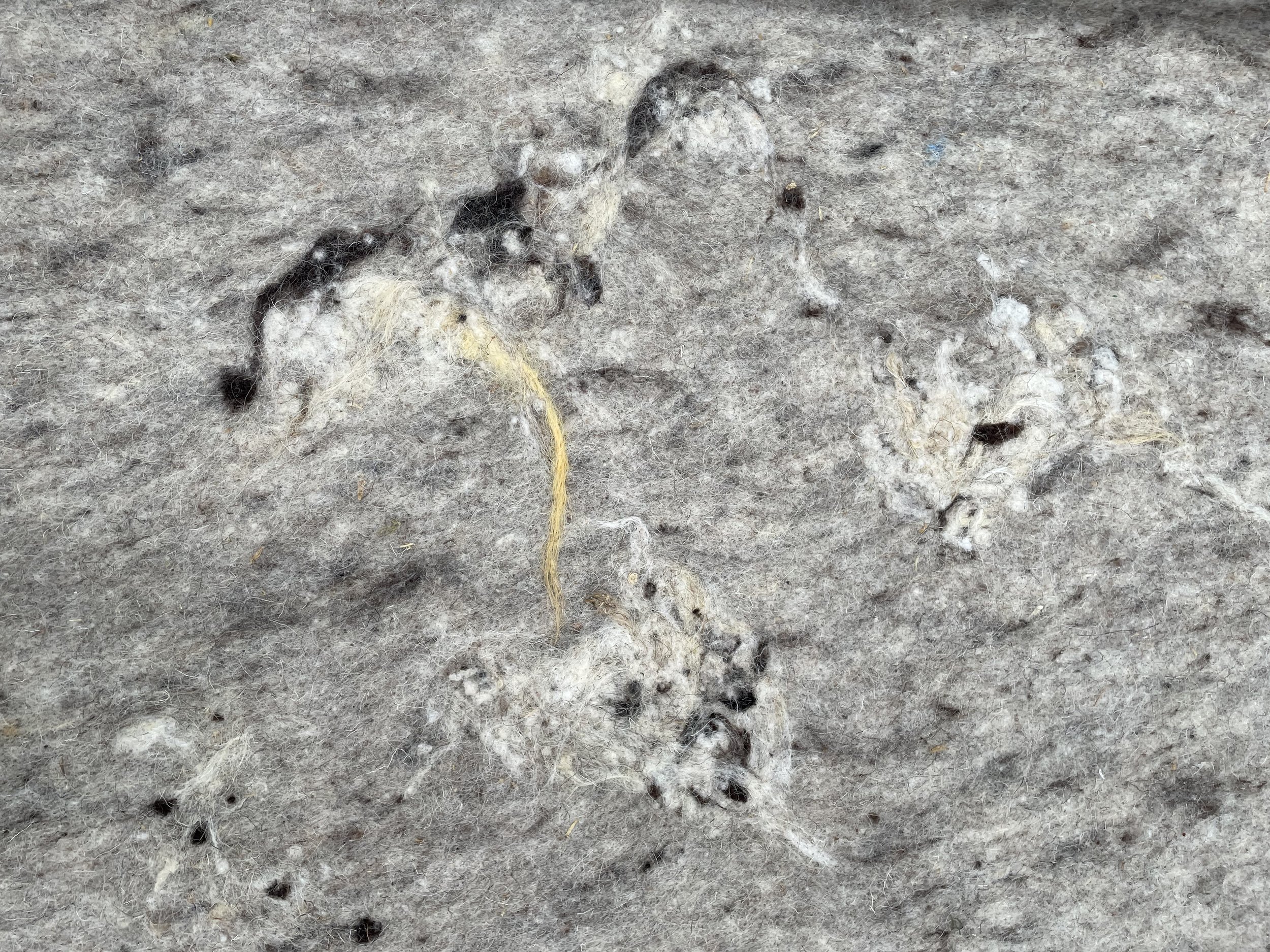
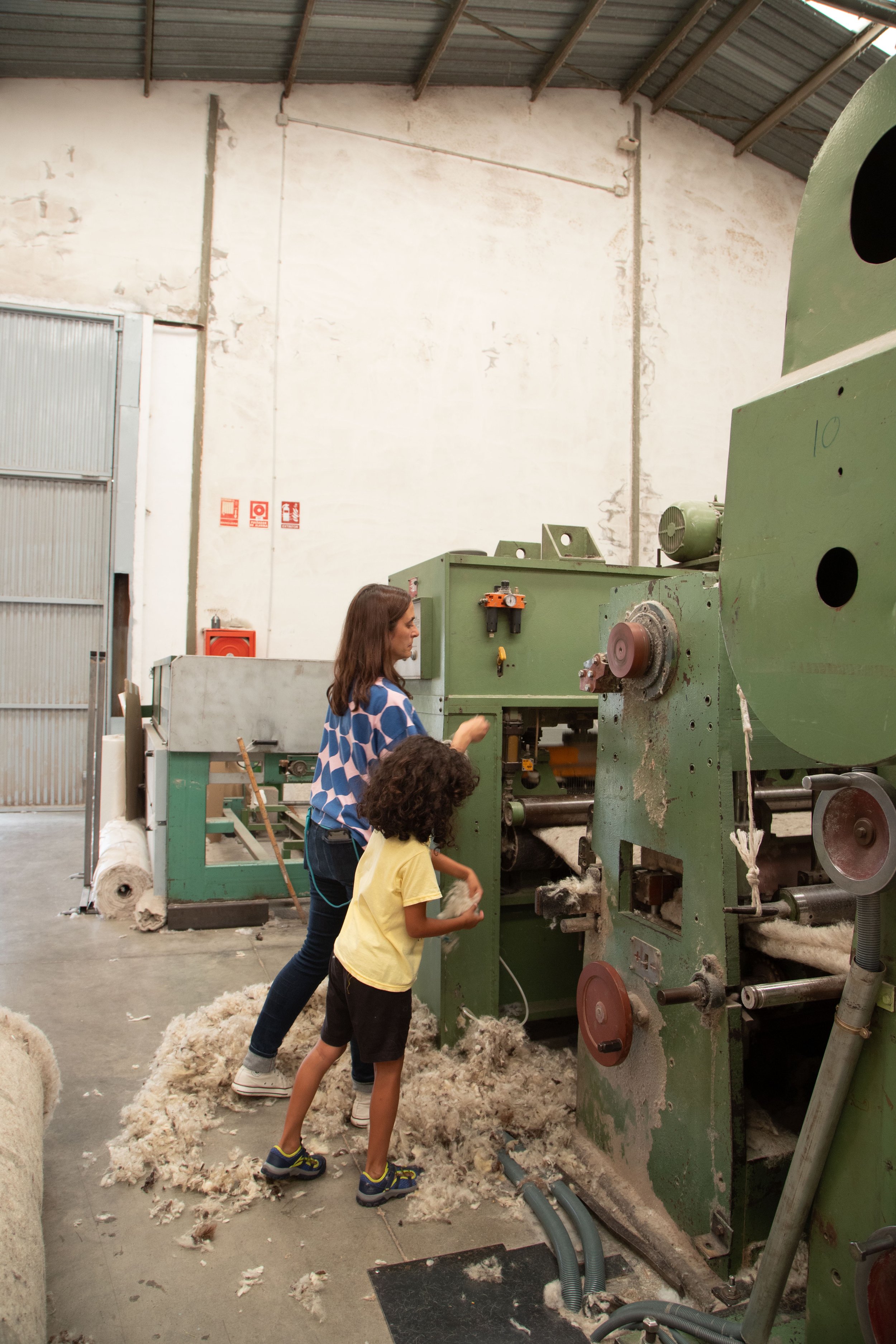
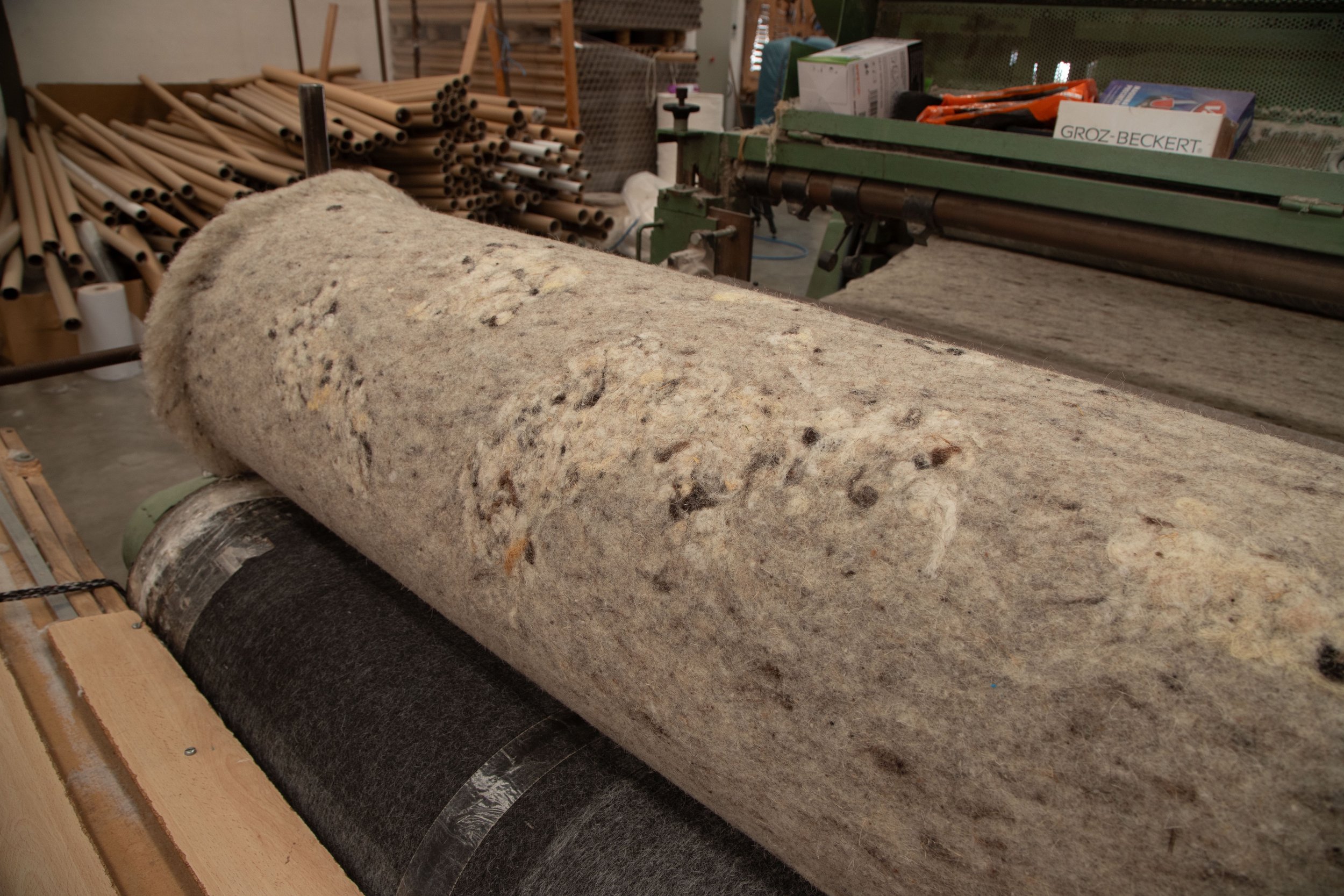
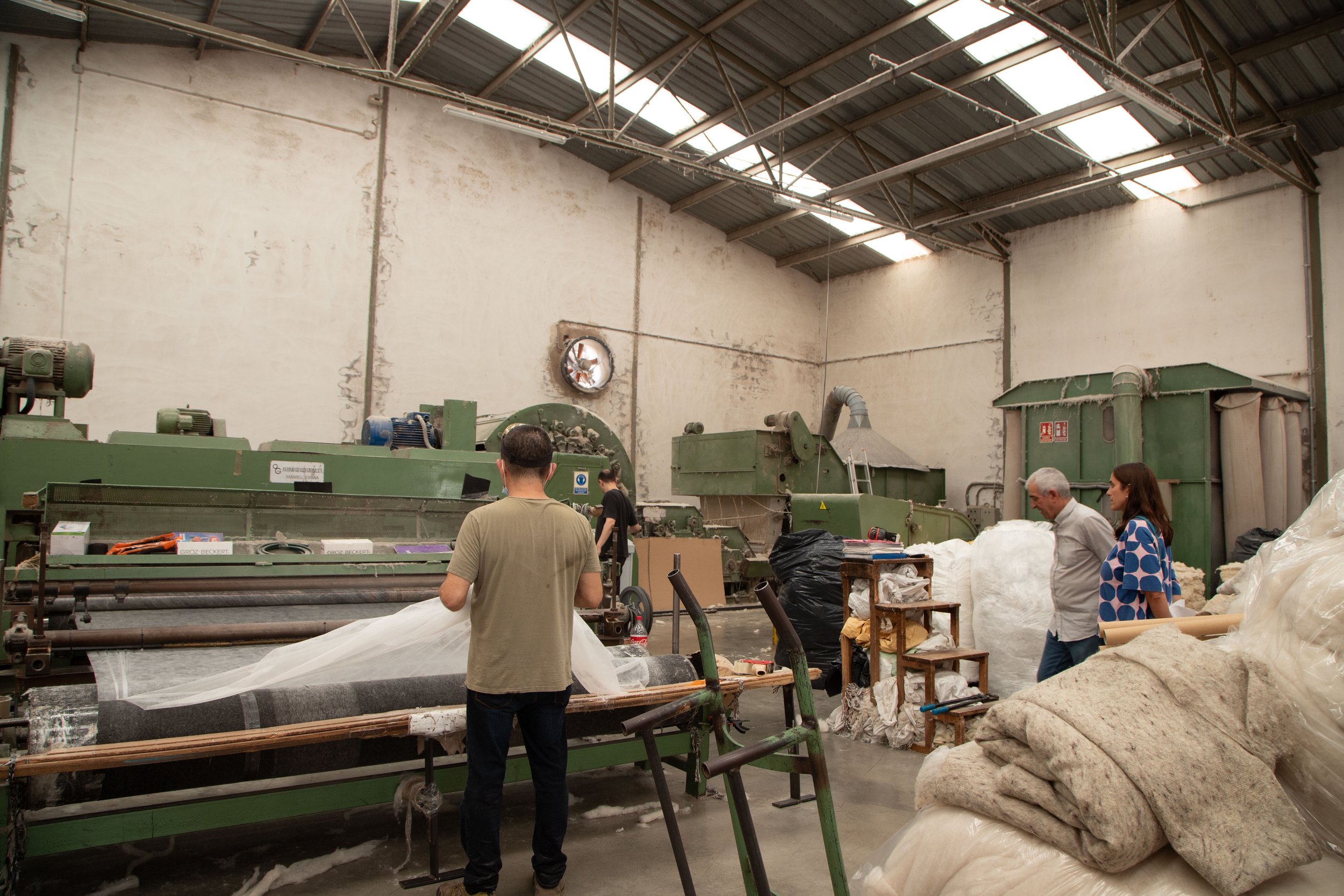
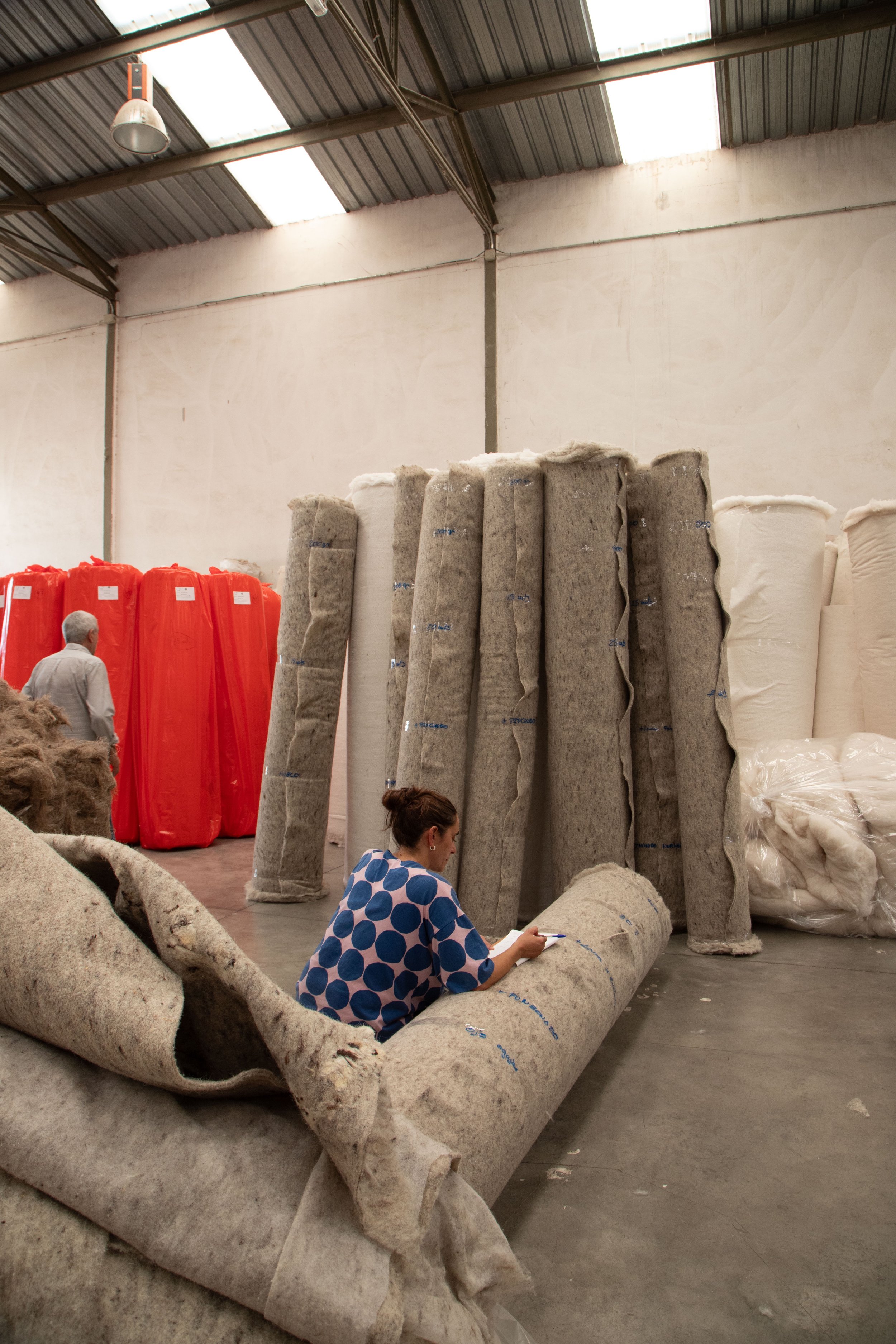
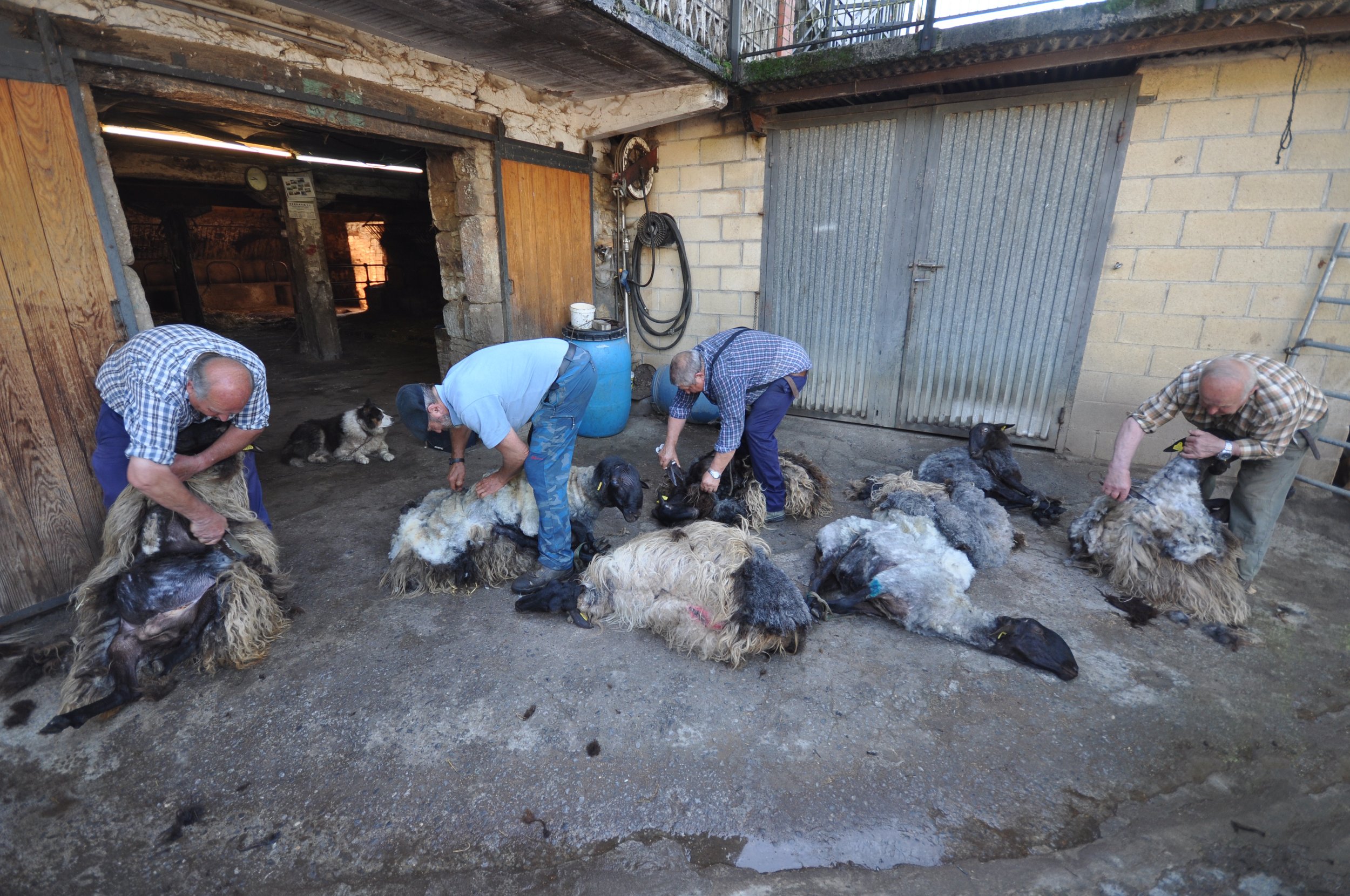

This work regards wool as a source of knowledge—not only for the shepherding communities that keep this heritage alive but also for the small rural and family-run industries that preserve ancestral skills and keep them in practice.
It is no coincidence that the sheep has come to symbolize the divine (Agnus Dei) and that its consumption is permitted and celebrated in Islam, Christianity, and Judaism. It is no coincidence that its fleece has been our second skin since the Neolithic era. It is no coincidence that sheep were the first to migrate, to transhume (from trans- “beyond” and humus“earth”). They have always chosen the best paths, forging their way through rugged peaks—ingenious navigators seeking new lands, always in pursuit of an eternal spring.
Wherever sheep passed first, humans followed.
